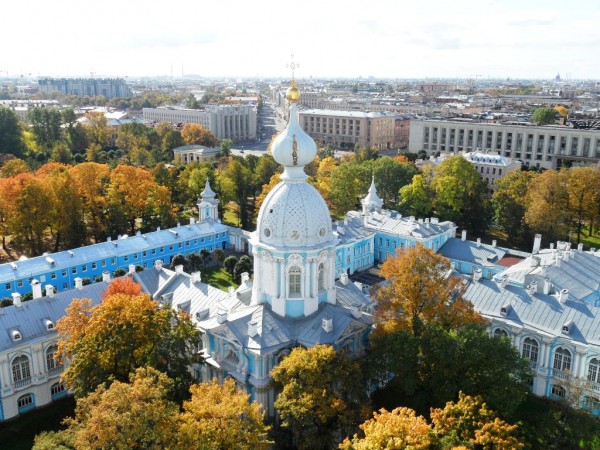One of the most important – and fun – aspects of planning a career break is deciding where to go. With so many choices out there, though, it can easily become daunting. Here are a few things to keep in mind as you debate South America versus Southeast Asia, Europe versus Africa or Australia versus the Middle East.

What Calls You
First things first – think about what calls to you. For many travelers, their favorite destinations have been places that have spoken to them in some way before they have even visited.
For example, Meet, Plan, Go! co-founder Michaela Potter became fascinated with Vietnam and Cambodia after studying the war and Pol Pot’s regime in the 1970s. So when she decided to take a three-month career break in 2001, she centered her travels on those destinations.
Ready to go? Need help planning? Sign up for our free 30-day planning e-course!
Meet, Plan, Go! editor Katie Aune read a biography about Catherine the Great of Russia when she was in high school, which led to majoring in Russian & East European Studies and taking Russian language classes in college. When she started thinking about a career break, Russia was at the very top of her list.
So think about places or cultures that might call you. They don’t have to be steeped in history – perhaps there is a cuisine that you love, a language that you want to learn or an aspect of your family background that you want to explore. Think about some of your favorite movies or books – do they tend to take place in the same destinations or center on similar themes? Inspiration is all around you and you may not even realize it.

Timing
Once you come up with a short list of the destinations you want to visit, think about when the best time is to travel to those countries.
What will the weather be like?
What kind of weather do you prefer and what types of activities are you likely to engage in?
And are there any major events taking place that you might want to witness or participate in?
For example, the months of September – November in the southern part of Thailand is monsoon season, so you won’t be able to enjoy the beaches. However, this time of year also sees some unique local festivals, so you will be able to experience part of the culture most travelers don’t.
December – January are the summer months in Australia and New Zealand, making for a nice escape from winter in the northern hemisphere. However, this is also the time of year when students are on break so most Aussies and Kiwis will vacation during this time, creating competition for lodging and activities.
Some people follow the warm weather so they can avoid experiencing cold, harsh winter climates during their career break, but that doesn’t mean you have to. If you’re an avid skier, spending February in the snow-covered mountains of Europe may be just your thing!

Participating in local holidays and festivals offers a unique cultural experience, but it can also offer some challenges. During countrywide holidays, such as the Thai New Year (Songkran Festival), most locals travel, making it difficult to book transportation or accommodation. This is also the case during the Hindu celebration of Diwali in India. Don’t let that deter you, but do your best to be prepared and stay patient.
It’s also important to understand the significance of the holiday or festival and try to act as respectful as possible. During Ramadan in Islamic countries, non-Muslims and visitors are not expected to observe the fast, but it is respectful to be discrete when consuming food or water during the day. Learning about the customs of the countries you plan to travel to is a great way to understand their holidays as well as their cultures. And if you happen to “stumble upon” a holiday, don’t be afraid to ask a local more about it and find out how you can participate.

Comfort Level
Finally, think about your comfort level with respect to the places you plan to visit. Travel is about pushing yourself out of your comfort zone, but only you know how far you are willing to go.
Before hitting the road, you do want to have the peace of mind that where you are going is safe – not just for your own comfort but that of your friends and family staying behind. The U.S. State Department’s website offers tips for safely traveling internationally (including registering with the local US Embassies) and posts warnings and alerts for countries all around the world.
Before you leave, try to get a handle on local issues in the countries you may visit by following the websites of international papers, signing up for Google Alerts or check out message boards and forums. While a lot of news stories tend to focus on the negative, locals or fellow travelers may be able to give you a more balanced perspective. Try the Lonely Planet Thorn Tree forum, BootsnAll forums or Couchsurfing message boards for up to date information from people on the ground in your chosen destinations.
While Americans often assume that we are viewed negatively overseas and that it is not safe to travel abroad as an American, this couldn’t be further from the truth. Most people can differentiate between the individual and one’s government, especially when it comes to Americans. And most of the time, people don’t even care where you are from. As long as you respect their cultures, refrain from illegal activities, and keep an open mind, you will be fine.











